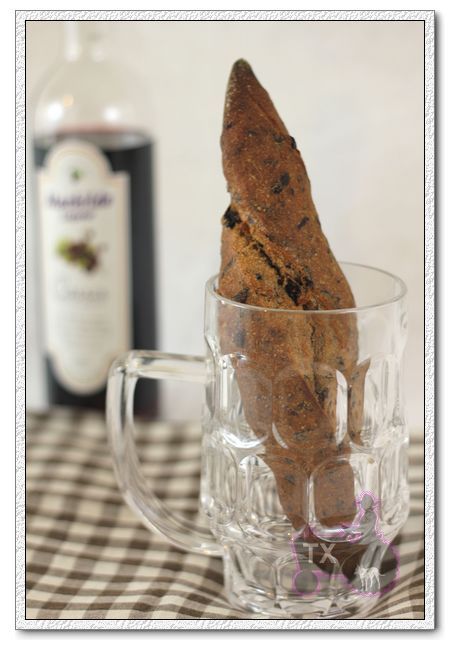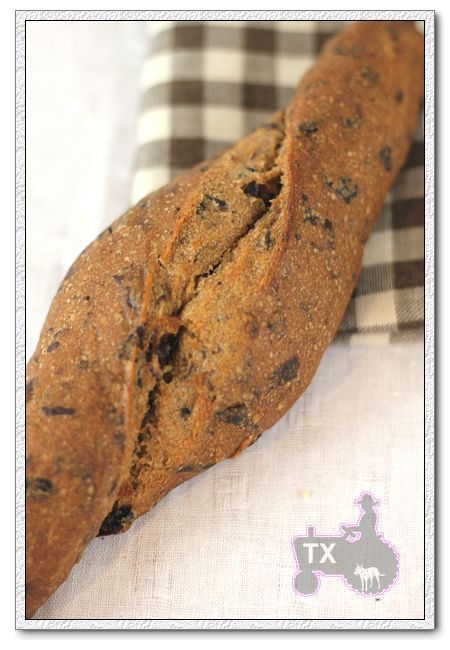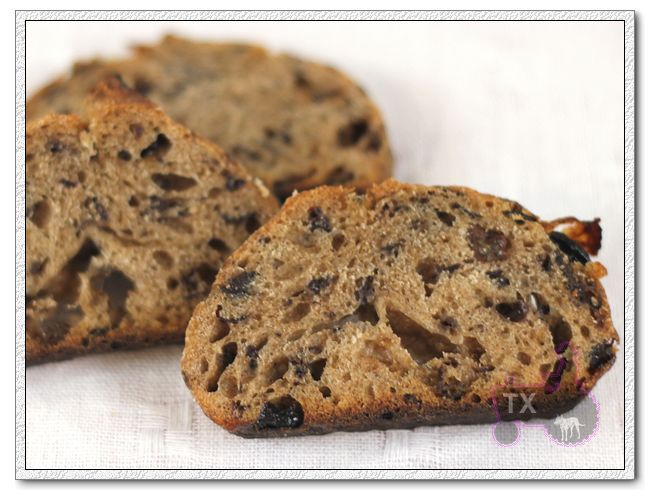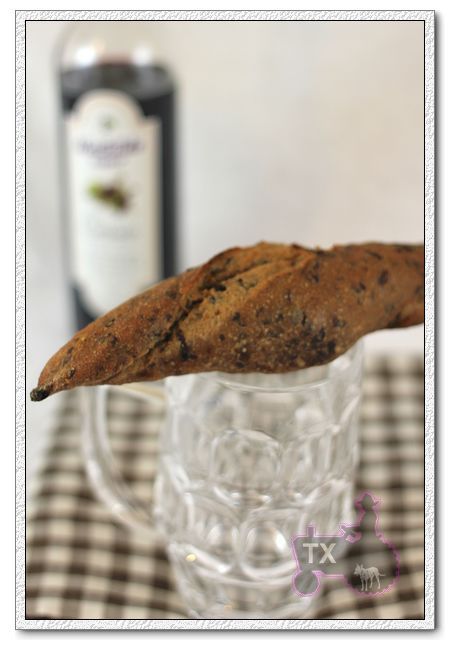
Another very tasty bread from Dan Lepard's "A Handmade Loaf", I mostly followed the formula, but left out the instant yeast, using rye starter only, which means the bulk rise was 3 to 4 hours at room temp, then shaped and retarded the loaves in the fridge overnight. The next morning, took out, warmed up for 1 hour, then baked.
Made "twisted fendu" rolls (each around 210g), inspired by wildyeast's post here. Came out pretty good.

Since currants soak up different amount of liquid and they are added at the end of kneading, it's hard to know how much extra water to use. The first time I added extra 30g, the dough was still on the dry side, the 2nd time I used the same amount, yet the dough was unbelieablely wet and sticky. The wet dough did lead to a more open crumb - even though it had 50% of ww flour and rye flour, as well as a lot of currants.

Something new I learned while researching about this bread, "dried currants" are made from a kind of small grapes, not fresh black currants; while cassis is a liquor that's indeed made from black currants, so Cassis and currants in the bread are in fact not "related" as I had imagined. Doesn't matter though, they complement each other perfectly, resulting a very rich tasting bread.

My old cheap point and shoot camera died during the Africa trip, so I bought a new DSLR, this is my first batch of bread photos with the new camra/lense. A lot of learn and get used to, the pictures are definitely a working progress.

- txfarmer's Blog
- Log in or register to post comments
What a coincidence... my point and shoot died just before we came to L.A>
I am having a horrible time taking photos with my DSLR - I wish I had more time to practice, with the manual next to it, but.... life is just too busy
great bread as usual - I haven't made this recipe from his book, liked the use of rye starter instead of regular yeast
There's quite a learning curve for DSLR, isn't there? I like it though, a lot more to control, which means more room for creativity - and mistakes. The downside is that now I have more excuses to spend money: really want more/better lenses.
Gosh, what was I doing in May to have missed Susan's twisted fendu blog?
Lovely bread and so much more interesting than the standard rolls.
Great bake!
They I like how I can get a nice "scoring mark" without "scoring".
putting hot water ont he currants to soak them before adding them to the bread? This would save you from having to figure out how much to add to the bread and the currants would be plump and moist all the way through the bread.
How odd, I thought everyone knew that currants for baking were corinth grapes dried, and black currants were different animals altogether, live and learn, you are the second person who didn't know this.
Must be the foodies in my background. Grandmother, mother, and two aunts who all were interested in food and cooking. Gained the knowlege by osmossis as the saying goes.
I did soak the currants overnight, in boiling cassis and water liquid (an essential step of this bread in fact, the rich flavor comes from the soaking). What I meant is that different currants releases different amount of liquid after they are kneaded into the dough. Some holds onto the liquid better than others, so the dough ends up wetter or drier accordingly.
Well, I grew up in China, where black currant is not native; dried currants were not available until only a few years ago, that's why I didn't know they were different. I infact never heard of dried currants until I started baking 2 years ago. I am definitely not the 2nd "CHINESE" person not to know this. :P My family are full of foodies too, not in western cusin however.
Hi Txfarmer,
I have not stopped admiring your breads. They are truly gorgeous. i owe a copy of Dan Lepard's book too. Sorry for asking this question here but I came across this in one of your entries, and have tried to look for it again but just can't find it again.
I think you said something like if one is using instant yeast instead of fresh yeast, if using volume measurements (so for example if i use a measuring spoon), the qty to use stays the same regardless? Therefore, 1 tsp of fresh yeast = 1 tsp of instant yeast???
I have been using this reliable ratio, fresh yeast:dry active yeast:instant yeast, 1:0.5:0.33, even for volume measurements. Have i been getting it wrong all this while? It has worked for me so far but I would just like to clarify.
Thanks for the info!
1:0.5:0.33 is what I use for converting, by "weight". However, after looking up the density of fresh yeast/instant yeast, the volume conversion seems to be 1:1 - theoretically. BUT, things in reality are different. My rising time is always much shorter than what the "Handmade Loaf" says, so I have been using 1:0.5(fresh:instant) by volume, to get comparable rising time.
i've been using 1:0.33 thereabouts, a bit more or less depending on the awkardness of rounding off. I live in tropical climes so suggested proofing times are never good for me anyway.
thanks for the info!